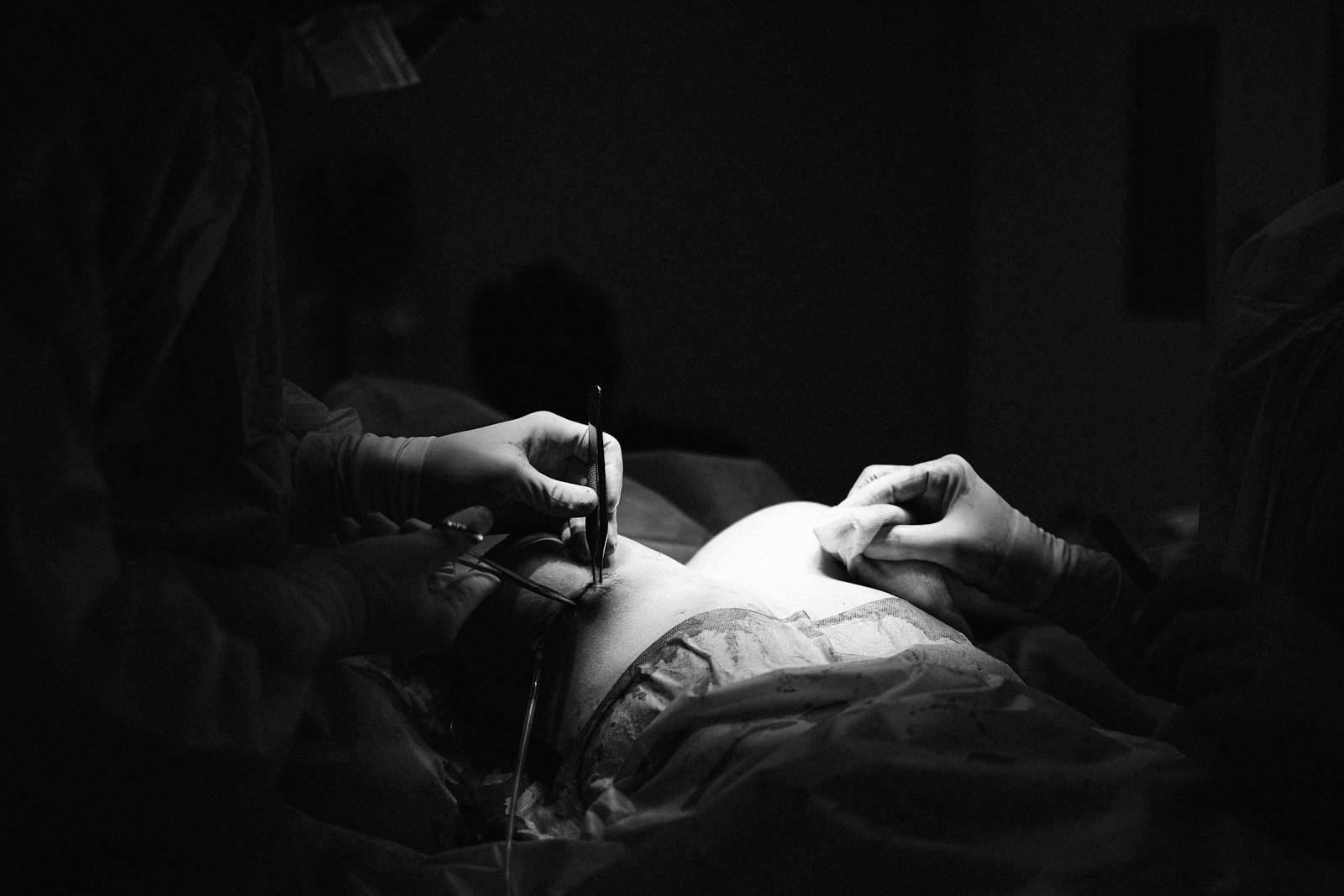Introduction
Breast augmentation, also known as augmentation mammoplasty, is a surgical procedure that involves the placement of breast implants to enhance the size and shape of the breasts. This cosmetic surgery has gained immense popularity over the years, with many women seeking to improve their self-esteem and body image. However, it is crucial to understand the potential risks and impact on health before making a decision.
İçindekiler
In this article, we will explore the various risks and complications associated with breast augmentation surgery. We will also delve into the impact on breast health, including its effects on mammograms and breast cancer detection. Additionally, we will discuss the potential changes in breast sensitivity and breastfeeding ability. Furthermore, we will examine the impact on mental and emotional health, considering body image issues and the prevalence of post-operative depression and anxiety. Finally, we will touch upon long-term health considerations, including research on the lifespan of breast implants and potential complications that may arise in the future. By understanding these factors, individuals can make an informed decision about whether breast augmentation is the right choice for them.
Overview of breast augmentation and its popularity
Breast augmentation, or augmentation mammoplasty, is a surgical procedure that involves the placement of breast implants to enhance the size and shape of the breasts. It is a highly popular cosmetic surgery, with thousands of women opting for this procedure each year. The desire for fuller, more proportionate breasts is often driven by a desire to improve self-esteem and body image. Breast augmentation has become widely accepted and normalized in society, with celebrities and influencers openly discussing their own experiences. The accessibility and advancements in surgical techniques have contributed to its popularity, making it a popular choice for those seeking to enhance their physical appearance.
Common motivations for undergoing breast augmentation
Many women choose to undergo breast augmentation for various reasons. Some common motivations include:
- Enhancing body image: Women may desire a fuller and more proportionate bust to improve their body confidence and feel more attractive.
- Correcting asymmetry: Breast augmentation can address breast size and shape discrepancies, creating a more balanced appearance.
- Restoring volume after pregnancy or weight loss: Pregnancy and weight loss can cause a loss of breast volume, and breast augmentation can help restore the shape and fullness that was lost.
- Reconstructive purposes: Breast augmentation is often undertaken by women who have undergone mastectomy or breast injury, providing them with an opportunity to restore their breasts.
- Boosting self-esteem: Many women believe that breast augmentation can improve their overall self-esteem and quality of life.
It is essential for each person considering breast augmentation to carefully evaluate their motivations and consult with a qualified surgeon to ensure it is the right choice for their individual circumstances.
Risks and Complications
Breast augmentation, like any surgical procedure, carries certain risks and potential complications. It is important for individuals considering this procedure to be aware of these possible outcomes. Common risks include infection, bleeding, changes in nipple sensation, and scarring. Complications that may arise during or after the procedure include implant rupture or leakage, capsular contracture (tightening of scar tissue around the implant), and asymmetry. It is also important to note that breast implants are not permanent devices and may need to be replaced or removed in the future. While these risks and complications are relatively rare, it is crucial for patients to discuss them thoroughly with a qualified surgeon to make an informed decision.
Potential risks associated with breast augmentation surgery
While breast augmentation surgery is generally safe, there are potential risks that individuals should be aware of. These risks include infection, bleeding, changes in nipple sensation, and scarring. In some cases, there may be complications during or after the procedure, such as implant rupture or leakage, capsular contracture, and asymmetry. It is important to note that breast implants are not permanent devices and may require replacement or removal in the future. Although these risks and complications are relatively rare, it is important to discuss them thoroughly with a qualified surgeon and understand the potential impact they may have on your health before making a decision.
Complications that may arise during or after the procedure
During or after the breast augmentation procedure, there is a potential for complications to arise. Some common complications include infection, bleeding, and changes in nipple sensation. Infections can occur due to bacteria entering the incision site, which may require antibiotic treatment. Bleeding can lead to hematoma formation, requiring drainage or additional surgery. Changes in nipple sensation, such as increased or decreased sensitivity, can also occur, although these are usually temporary. Other complications may include capsular contracture, where scar tissue forms around the implant, causing discomfort or distortion of the breast shape. Implant rupture or leakage may happen, requiring implant removal or replacement. Additionally, some patients may experience asymmetry or dissatisfaction with the aesthetic outcome, necessitating revision surgery. Surgeons will discuss these potential complications and their management options with patients during the consultation process.
Impact on Breast Health
Breast augmentation surgery can have several impacts on breast health. One consideration is the effect on mammograms and breast cancer detection. The presence of breast implants can make it more challenging to obtain clear images during mammograms, potentially leading to difficulties in detecting abnormalities. It is important for women with breast implants to inform their mammography technologist about their implants to ensure that the images are interpreted accurately. Additionally, breast sensitivity may change after augmentation surgery, with some women experiencing increased or decreased sensation. Breastfeeding ability can also be affected, although studies suggest that most women are still able to breastfeed successfully. It is crucial for individuals considering breast augmentation to discuss these potential impacts on breast health with their surgeon and carefully consider their options.
Effects of breast augmentation on mammograms and breast cancer detection
Breast augmentation surgery can have an impact on mammograms and breast cancer detection. The presence of breast implants can make it more challenging to obtain clear images during mammograms, potentially leading to difficulties in detecting abnormalities. It is important for women with breast implants to inform their mammography technologist about their implants to ensure that the images are interpreted accurately. Special imaging techniques, such as additional views or breast ultrasound, may be necessary to obtain thorough evaluations. Although implants can complicate the detection process, studies have shown that mammography remains an effective tool in detecting breast cancer in women with breast implants. Regular breast self-exams and clinical breast exams are also crucial for monitoring breast health and detecting any changes. Consulting with a healthcare provider is essential to ensure proper monitoring and screening.
Potential changes in breast sensitivity and breastfeeding ability
Breast augmentation surgery can potentially impact breast sensitivity and breastfeeding ability. Some women may experience changes in nipple or breast sensation after the procedure. This can range from increased or decreased sensitivity to a complete loss of sensation. While many women retain their ability to breastfeed after breast augmentation, there is a small risk of complications that may affect breastfeeding. The placement of the implants and any surgical manipulation of the breast tissue can potentially disrupt milk production and flow. It is important to discuss these concerns with a qualified surgeon and weigh the potential impact on breastfeeding before undergoing breast augmentation. Proper evaluation and communication with a healthcare provider can help individuals make informed decisions about their breast health and breastfeeding goals.
Impact on Mental and Emotional Health
Breast augmentation can have a significant impact on mental and emotional health. Many women seek breast augmentation to enhance their body image and improve self-confidence. However, it is important to recognize that the procedure may not automatically resolve existing body image issues or address underlying psychological concerns. Some individuals may experience post-operative depression or anxiety, which can be attributed to factors such as unrealistic expectations, post-surgical pain, or changes in body perception. It is crucial for individuals considering breast augmentation to have a realistic understanding of the potential outcomes and to address any mental health concerns with their healthcare provider. Additionally, alternative options for improving body satisfaction and self-esteem should be explored to ensure the best possible mental and emotional health outcomes.
Body image issues and psychological considerations
Body image issues and psychological considerations play a significant role in the decision to undergo breast augmentation. Many women seek this procedure to improve their body image and boost their self-esteem. However, it is important to address any underlying psychological concerns before considering surgery. Breast augmentation may not automatically resolve existing body image issues, and individuals should have realistic expectations about the outcomes. Additionally, it is crucial to discuss any mental health concerns with a healthcare provider, as post-operative depression and anxiety can occur. It is also important to explore alternative options for improving body satisfaction and self-esteem, such as counseling or support groups, to ensure the best possible mental and emotional health outcomes.
Prevalence of post-operative depression and anxiety
Post-operative depression and anxiety can occur following breast augmentation surgery, and it is important to understand the prevalence of these psychological conditions. Studies have shown that approximately 10-20% of women experience post-operative depression, and around 18-31% experience post-operative anxiety. These rates can vary depending on individual factors such as personal history, support systems, and coping mechanisms. It is crucial for healthcare providers to discuss these potential risks with patients and provide appropriate support and resources. This may include mental health referrals, counseling, or support groups. Being aware of the potential for post-operative depression and anxiety can help individuals seek the necessary help and support, ensuring the best possible mental and emotional health outcomes.
Long-term Health Considerations
Research on the lifespan of breast implants is vital in understanding the long-term health considerations of breast augmentation. While breast implants are designed to be long-lasting, they are not considered permanent and may require replacement or removal in the future. According to studies, the average lifespan of breast implants is around 10-15 years, although they can last longer with proper care. Over time, complications such as implant rupture, capsular contracture, and implant leakage may arise. These complications can lead to discomfort, changes in appearance, and potential health risks. It is essential for individuals with breast implants to regularly monitor their implants and consult with their healthcare provider for any concerns or necessary follow-up procedures.
Research on the lifespan of breast implants
Research on the lifespan of breast implants is crucial in understanding their long-term effects on health. While breast implants are designed to be long-lasting, they are not permanent and may require replacement or removal in the future. Studies indicate that the average lifespan of breast implants is approximately 10-15 years, but they can last longer with proper care. Regular monitoring and follow-up with a healthcare provider are essential to detect any complications that may arise, such as implant rupture, capsular contracture, or implant leakage. These complications can lead to discomfort, changes in appearance, and potential health risks. By staying informed and proactive, individuals with breast implants can make informed decisions about their long-term health.
Potential complications that may arise in the long run
In the long run, breast augmentation may be associated with potential complications that can impact a person’s health. Some of these complications include implant rupture, implant leakage, capsular contracture, and changes in breast symmetry or shape. Implant rupture occurs when the outer shell of the implant breaks, leading to the leakage of silicone or saline solution. Capsular contracture refers to the tightening of scar tissue around the implant, resulting in discomfort and changes in breast appearance. Additionally, over time, the implants may shift or become displaced, requiring revision surgery. It is important to note that while these complications can occur, they are not guaranteed and can vary from person to person. Regular check-ups with a healthcare provider can help monitor the condition of the implants and detect any potential issues early on.
Making an Informed Decision
When considering breast augmentation, it is important to make an informed decision that takes into account potential risks and their impact on your health. This begins with consulting with a qualified and experienced surgeon who can provide you with all the necessary information and answer any questions or concerns you may have. During your consultation, ensure that you understand the procedure, including the risks and complications that may arise. Additionally, reviewing and signing an informed consent form is essential to ensure that you fully comprehend the potential impact of breast augmentation on your health. It is also crucial to explore alternative options, such as non-surgical breast enhancement methods, and weigh their potential impact on your health before making a final decision.
Consultation with a qualified surgeon and understanding informed consent
When considering breast augmentation, it is crucial to consult with a qualified and experienced surgeon. This consultation provides an opportunity to discuss your goals, concerns, and expectations regarding the procedure. A skilled surgeon can evaluate your unique circumstances and provide personalized recommendations. During this consultation, it is essential to ask questions about the potential risks and complications associated with breast augmentation. Understanding these risks is crucial in making an informed decision. Additionally, reviewing and signing an informed consent form is important to ensure that you fully comprehend the potential impact of breast augmentation on your health. This process ensures that you have been adequately informed and allows you to give your consent for the procedure to take place.
Alternatives to breast augmentation and their potential impact on health
There are alternatives to breast augmentation for those who desire a change in breast appearance without undergoing surgery. These options include:
- Breast Lift: This procedure is ideal for women who seek perkier, more lifted breasts. It involves removing excess skin and reshaping the breast tissue, resulting in a firmer and more youthful appearance. While this procedure does not increase breast size, it can improve overall breast contour and shape.
- Fat Transfer: Also known as autologous fat grafting, this procedure involves using liposuction to remove fat from one area of the body and injecting it into the breasts. This technique can enhance breast size and shape, and since it utilizes a person’s own fat, it carries fewer risks and potential complications.
It is crucial to consult with a qualified surgeon to determine which option is best for your specific goals and health considerations.



